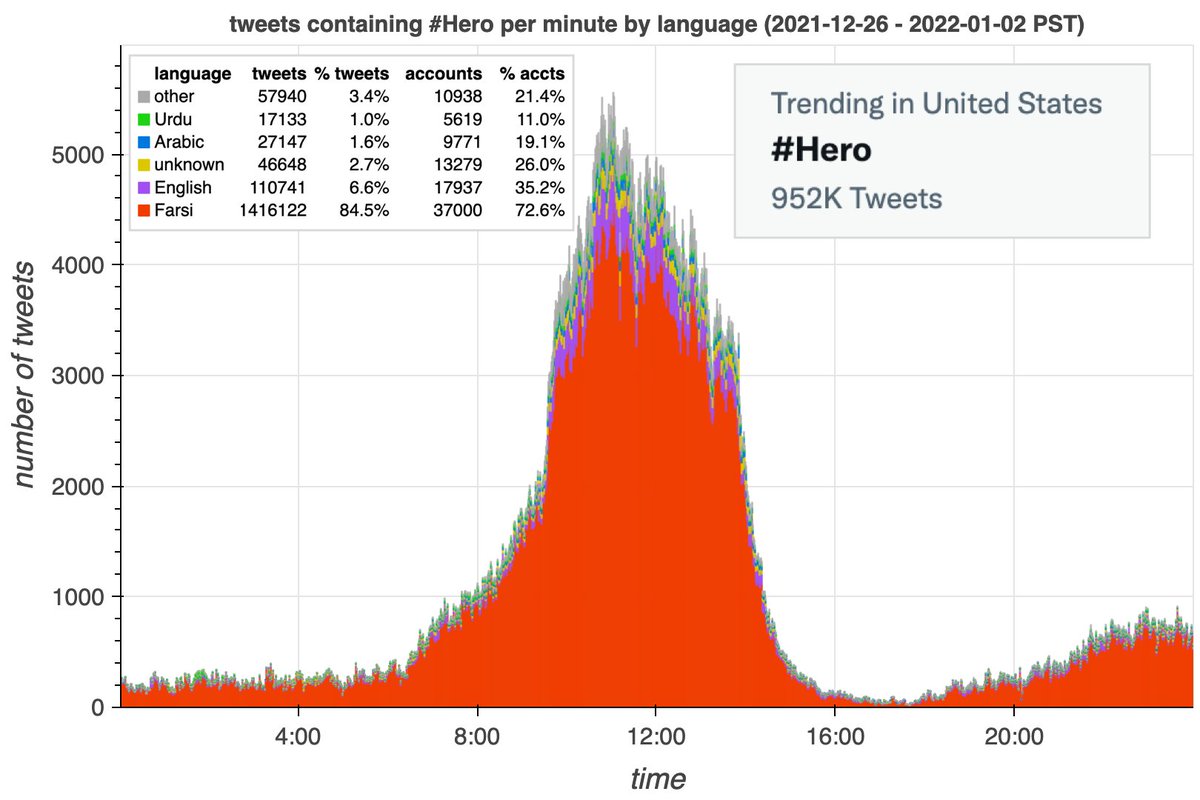The hashtag #Hero trended in the USA yesterday (January 2nd, 2022) with a truly massive volume of tweets. In an interesting twist, the vast majority of the tweets are in Farsi despite "hero" being an English word.
cc: @ZellaQuixote
cc: @ZellaQuixote

The #Hero trend appears to be the result of a preplanned tweetstorm commemorating General Qasim Soleimani on the second anniversary of his assassination in January 2020. Tweet activity (mostly in Farsi) using this hashtag has been building since mid-December 2021. 



Over 1.6 million tweets containing #Hero were tweeted by 50872 accounts on Jan 2, 2022. Very little of the traffic appears to be automated. An exception is @Ra_Shojaei, which tweets pro-Soleimani tweets 24/7 via a custom app called "TwèétDeck" (not to be confused with TweetDeck). 





The #Hero tweets are disproportionately from new accounts, with 9.8% of tweets coming from accounts created within the last week and roughly a quarter from accounts created within the last 3 months. 1250 of the accounts participating in the trend were created the same day. 



The #Hero trend contains a lot of repetition, with many tweets duplicated verbatim by dozens or hundreds of accounts. The repetitive content is in a mix of Farsi, English, and French. 



• • •
Missing some Tweet in this thread? You can try to
force a refresh































